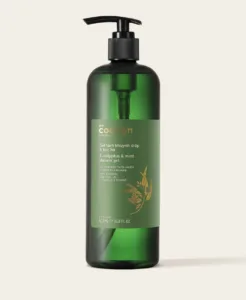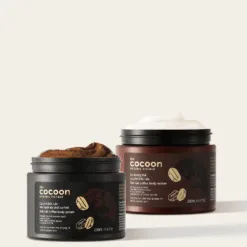New
From Ancient Remedies to Global Brands: Vietnam’s Vegan Beauty Story
The beauty industry is at a crossroads, with an increasing number of consumers demanding products that are not only effective but also aligned with their ethical values. This demand has fueled the rapid growth of the vegan cosmetics market, a segment that strictly prohibits any animal-derived ingredients. While this trend is a modern phenomenon, its core principles of purity, sustainability, and respect for life find a profound resonance in the centuries-old beauty traditions of Vietnam.
This in-depth article tells the compelling story of how Vietnam’s ancient herbal remedies are being transformed into globally competitive vegan brands. We will explore the journey from a time when beauty secrets were passed down through generations to today’s market, where these timeless practices are being reimagined with modern science and global certifications. This is a story of cultural revival, ethical innovation, and a powerful return to nature.

The Blueprint of Beauty: A History Rooted in Nature
For hundreds of years, the Vietnamese approach to beauty was fundamentally tied to the land. Without access to synthetic chemicals or global supply chains, women relied on their deep knowledge of local flora. This was a form of “clean beauty” long before the term was coined, based on the belief that nature provided everything needed to nurture and protect the skin.
This traditional approach was not just about the ingredients; it was about the philosophy behind their use. Skincare was a daily ritual, a mindful practice of self-care and a way to connect with the natural world. The goal was to maintain the skin’s health and vitality, preventing issues before they arose.
Key Ingredients from Vietnam’s Botanical Pantry:
- Mugwort (Ngải Cứu): This herb, known for its strong scent and potent properties, was used to create face masks that purified the skin and soothed inflammation. It was a staple remedy for acne and other skin conditions.
- Gac Fruit (Gấc): A vibrant red fruit, Gac is an antioxidant powerhouse. Its oil was used in face masks to promote a youthful complexion and to protect the skin from sun damage.
- Soapberry (Bồ Kết): Long before shampoo bottles lined bathroom shelves, soapberry was the go-to for hair care. When boiled, its fruit created a gentle, natural cleanser that left hair shiny and strong.
- Tea Leaves (Lá chè): Green tea leaves were not just for drinking. They were also used in face steams and tonics to cleanse pores and provide a boost of antioxidants to the skin.
The absence of animal-derived ingredients was a natural consequence of this plant-centric approach. No one needed beeswax when there was a plethora of nourishing plant-based oils. No one needed collagen from animal sources when the healing properties of Centella Asiatica were so readily available.

The Modern Pivot: From Tradition to Innovation
The modern Vietnamese vegan beauty movement is built on a simple yet powerful idea: take these time-tested traditions and elevate them with modern science and ethical standards. This is not about imitation; it is about preservation and innovation.
The process of this transformation involves:
- Scientific Validation: Researchers are now studying the ancient remedies to understand the molecular mechanisms behind their effectiveness. They are isolating active compounds and conducting clinical trials to validate traditional claims. This scientific rigor adds credibility and ensures that products are not just traditional but also demonstrably effective.
- Advanced Formulation: Modern technology allows for the creation of stable, potent, and user-friendly products. For example, a traditional mugwort paste can be formulated into a lightweight serum, or a rice bran oil can be infused with other botanical extracts to create a powerful yet gentle cleanser.
- Sustainable Sourcing and Fair Trade: Many new brands are building direct relationships with local farmers, ensuring that ingredients are sourced sustainably and that the communities that grow them are fairly compensated. This creates a supply chain that is both ethical and transparent.
- Global Certifications: To compete in the global market, Vietnamese brands are pursuing international vegan and cruelty-free certifications. These seals of approval, such as those from The Vegan Society and Leaping Bunny, are crucial for building trust with international consumers and showcasing a genuine commitment to ethical practices.
This new generation of brands is successfully marrying the past and the present. They are honoring the wisdom of their ancestors while leveraging the tools of modern science to create products that are both effective and aligned with the values of today’s conscious consumer.

A Global Impact: The Promise of Vietnamese Vegan Beauty
Vietnam’s journey in the vegan beauty space is a powerful example for the rest of the world. It shows that the future of beauty is not in a laboratory, but in a garden. It demonstrates that tradition and innovation are not mutually exclusive; they can be the most powerful allies.
As the global market for vegan cosmetics continues to grow, Vietnam is poised to become a leader. The country’s rich botanical heritage, combined with a young and dynamic workforce, creates a perfect environment for innovation. Brands that can authentically tell their story—a story of ancient remedies, modern ethics, and a deep respect for nature—will be the ones that succeed.
The story of Vietnamese vegan beauty is a hopeful one. It is a story of a culture reclaiming its heritage, a people returning to their roots, and a new generation of entrepreneurs building a more ethical and sustainable future. It is a reminder that the most beautiful products often come from the simplest, most natural sources.

 Combo of exfoliating and moisturizing the body from Dak Lak coffee
Combo of exfoliating and moisturizing the body from Dak Lak coffee 